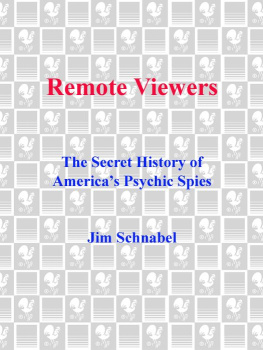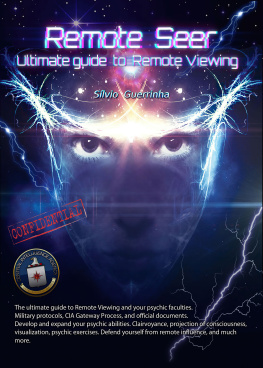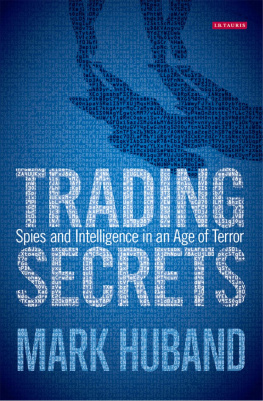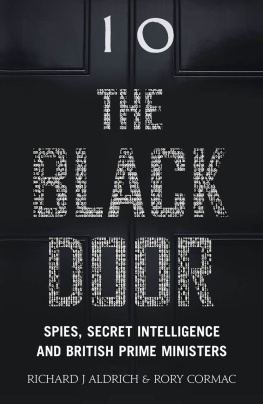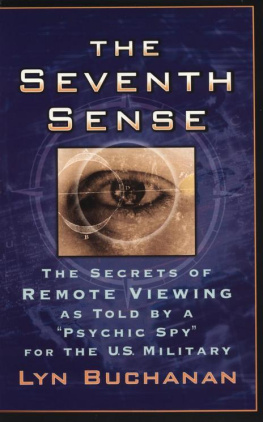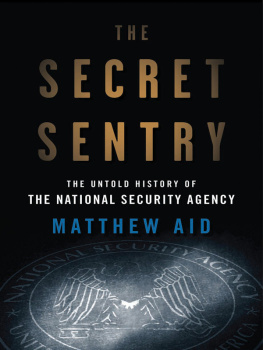As fantastic as X-Files episodes, but these things really happened:
- A part-time Christmas-tree salesman remote-viewed his way into the heart of a super-secret National Security Agency installation buried in the West Virginia mountains.
- The same psychic described previously unknown details of a high-tech Soviet military research facilitydetails that were later confirmed by spy satellite.
- A bizarre wave of paranormal visions haunted a group of scientists doing psychic research at Lawrence Livermore National Laboratory.
- A woman in Ohio psychically found the location of a crashed Soviet bomber in the jungles of Zaire, helping a CIA team to recover the wreckage before the Soviets got thereand earning praise from President Jimmy Carter.
- An Army remote viewer was the first in the U.S. intelligence community to describe the Soviets new Typhoon-class submarinewhile it was still indoors, under construction.
And those are just a few samples from this extraordinary story.
Published by
Dell Publishing
a division of
Bantam Doubleday Dell Publishing Group, Inc.
1540 Broadway
New York, New York 10036
Grateful acknowledgment is made to Harcourt Brace & Company for permission to reprint an excerpt from The Waste Land in Collected Poems 19091962 by T. S. Eliot, copyright 1936 by Harcourt Brace & Company, copyright 1964, 1963 by T. S. Eliot, reprinted by permission of the publisher.
Copyright 1997 by Jim Schnabel
All rights reserved. No part of this book may be reproduced or transmitted in any form or by any means, electronic or mechanical, including photocopying, recording, or by any information storage and retrieval system, without the written permission of the Publisher, except where permitted by law.
The trademark Dell is registered in the U.S. Patent and Trademark Office.
eISBN: 978-0-307-79038-5
v3.1
C ONTENTS
BOOK ONE
A CHEAP RADAR SYSTEM
BOOK TWO
A LITTLE SIDE GAME
BOOK THREE
A NEW AGE
A N OTE TO THE R EADER
T HIS BOOK IS ABOUT THE PARANORMAL, A SUBJECT WHICH IN LATE- twentieth-century Western society is inseparable from controversy.
However, I hope the skeptical reader will bear in mind that this book was put together with the standard techniques of investigative journalism. I conducted numerous interviews with people who participated at all levels in the events I describe. I cross-checked stories among sources, and I gathered as much relevant documentary evidence as I could. In the back of the book I have noted the source(s) of each significant piece of information in the text. Were the subject of this book a different kind of classified government programsay, the effort to develop radar-evading Stealth aircraftit would not be necessary to say any of this.
Because so many of the projects and operations discussed in these pages are still classified, some of my sources spoke to me on the condition that I identify them, as sources, in general terms onlye.g., a former senior CIA official. This is the kind of practice commonly used, and often abused, in books about classified matters. However, most of the sources for this book spoke to me openly, on the record. This is their story, not a dramatic invention of mine.
Jim Schnabel
August 1996
Marvellous as these methods of signalling may seem, there were medicine men who claimed that they could send their thoughts through the air and make things come to pass afar. Others could send their minds eyes to distant places and discover what was happening. White explorers have written of these things, but to say just how it was done must remain for modern medicine men to tell us.
Arthur C. Parker,
The Indian How Book,
1927
B OOK O NE
A CHEAP RADAR SYSTEM
[I]t seems to me that it would be a hell of a cheap radar system. And if the Russians have it and we dont, we are in serious trouble.
Representative Charlie Rose
(D-NC), House Select Committee
on Intelligence,
in a discussion
about remote viewing, 1979
T HE Z ONE
T HE DREAM FADED, AND M EL R ILEY AWOKE . S IX OCLOCK; THE SUN was not yet up. Brigitte, his wife, still lay asleep beside him. But the birds outside were awake and chattering, and they were Rileys usual alarm clock. He rose, showered, shaved, and dressed.
Riley was a morning person. He liked the dark calm of the predawn hours, the unsleeping stillness, half in this world, half in that. Downstairs in the kitchen he sat quietly, drinking coffee and smoking a cigarette, listening to his thoughts, watching through the window as the light changed on the trees and in the sky.
Riley was five feet eight, slim and fit, with wavy blond hair and an Irish, vaguely leprechaunish face. He had a tattoo on each arman eagle, a rabbitand a large winged dragon across his chest. But it was Rileys eyes that people tended to notice. Sometimes with surprise, or merely concentration, they would open widely, intensely, as if Riley were about to hypnotize someoneor had already hypnotized himself and were staring inward at his own soul.
Thirty-three years old, Mel Riley was a staff sergeant in the U.S. Army. He and his wife and their two young daughters lived in a town house at Fort Meade, Maryland, about twenty-five miles northeast of Washington, D.C. Meade, as its inhabitants abbreviated it, was the sprawling, town-like base for, among other things, the National Security Agency, the U.S. First Army, and a part of the Armys Intelligence and Security Command (INSCOM). Until recently, Riley had been a photo-interpreter at INSCOM, studying reconnaissance imagery from satellites and spy planes. But just now the Army was using him for something else.
Dressed in civilian clothes, which his new job required for security reasons, Riley drove the mile or so to work, past a golf course, parade grounds, a convenience store, and dozens of low buildings. Some of the buildings were brick, some were wood, some were named for dead generals, and some were simply numbered; many had obvious purposes, while others would always remain obscure. Rileys unit worked in two single-story wooden structures numbered 2560 and 2561. They were secluded beneath trees on a large open lot on the north side of Llewellyn Street, a quarter mile from Kimbrough Army Community Hospital. There beneath the trees, the buildings seemed strangely lonely and rural, almost forgotten. On the far end of 2560, the smaller building to the east, the land sloped down to an open field with a creek that ran south, under the road, into a park and a lake. To the north of the buildings was a field with sparse trees, photogenically bleak in winter. The two buildings were remnants of the great military construction boom of the Second World War, and had once housed a bakery school and mess hall. Here in September 1979, they looked like two cottages huddling together in the woods.
Riley parked in the driveway between the buildings. He walked up a set of wooden steps to a porchlike entrance near the right corner of 2561. He opened a heavy forest green metal door and went inside.
To a visitor, 2561 might have looked like a normal if somewhat makeshift military office. There was an entrance room, or foyer, with a secretarys desk, a refrigerator, a table with a coffeepot and mugs, and doors to two outer offices for the units commander and operations officer. Behind the secretarys desk, a narrow corridor led west, past half a dozen small cubicles with desks. The corridor terminated in a conference room.

